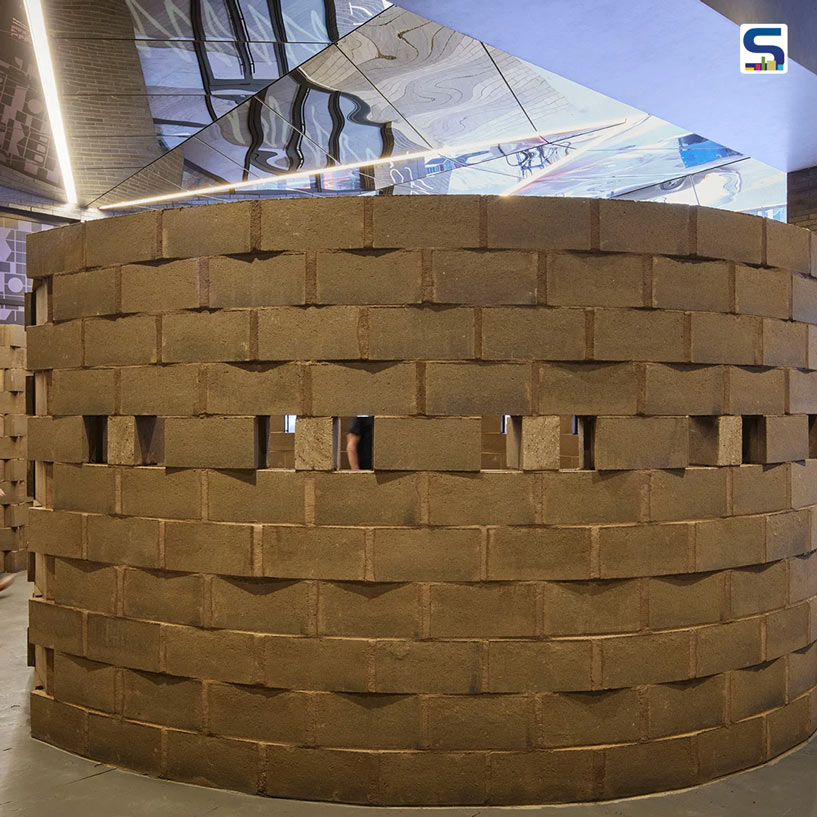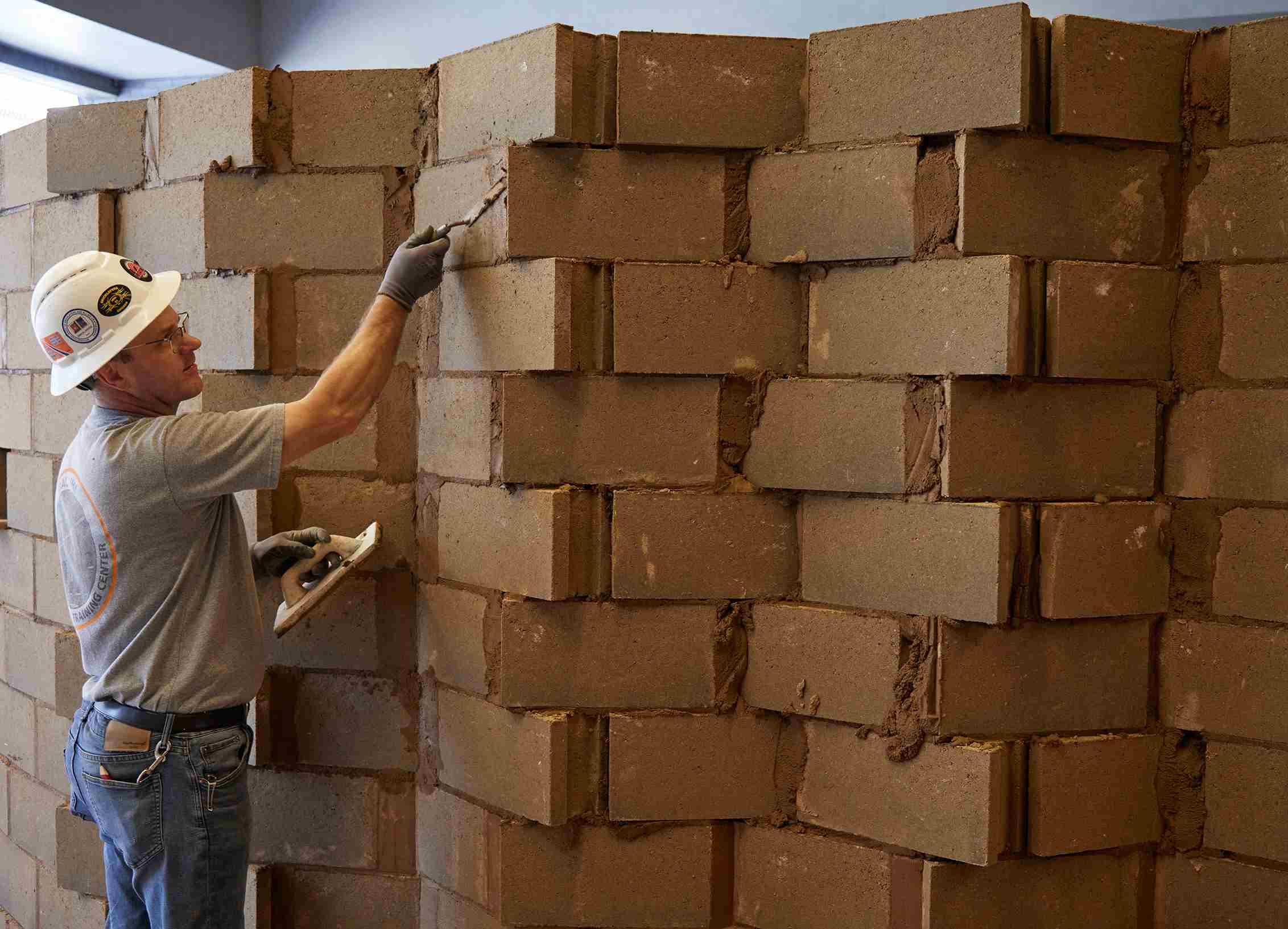
In partnership with Prometheus Materials, based in Colorado, architecture studio SOM has crafted a spiral installation using bio-bricks for the 2023 Chicago Architecture Biennial. Utilizing the Bio-Block building material developed by Prometheus Materials, the masonry block incorporates micro-algae and aggregate, presenting an eco-friendly alternative to traditional concrete. Here is a detailed report on SURFACES REPORTER (SR).

The innovative process eliminates the need for Portland cement, a common type contributing to approximately 8 per cent of global carbon dioxide emissions when combined with concrete.
According to SOM, the collaborative effort was to develop an algae-based, zero-carbon substitute for ubiquitous concrete blocks in buildings and cities. Situated in the Fulton Market District, the Bio-Block Spiral was the sole installation for this year’s biennial, positioned under a covered walkway at The Mews building in Downtown Chicago.
Reflecting the shell-like composition of the bio-cement, the studio envisioned a spiraling form to entice Fulton Market visitors to explore the installation. The entrance of the spiral faced inward toward the site’s walkway, while centrally positioned blocks rotated to create apertures offering views of the surroundings. The assembly employed a conventional stacked masonry technique executed by the International Masonry Institute and J&E Duff.

Utilizing the Bio-Block building material developed by Prometheus Materials, the masonry block incorporates micro-algae and aggregate, presenting an eco-friendly alternative to traditional concrete.
The entrance and interior wall ends of the spiral, formed an offset arrangement with undulating walls, has been constructed to enhance structural stiffness and allowed the installation to be self-supported, showcasing the versatility of the block form. The innovative process eliminates the need for Portland cement, a common type contributing to approximately 8 per cent of global carbon dioxide emissions when combined with concrete.
Photographs: Dave Burk; Courtesy: SOM